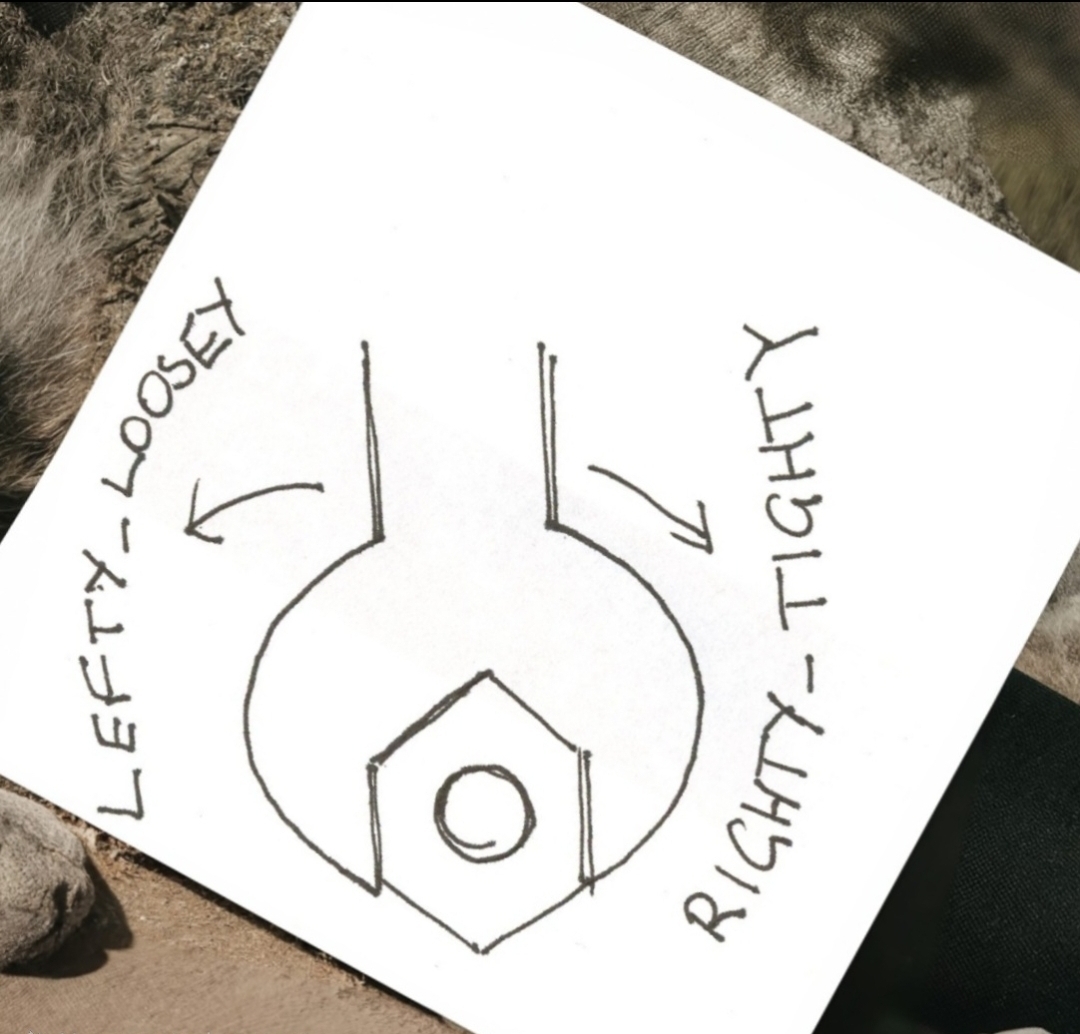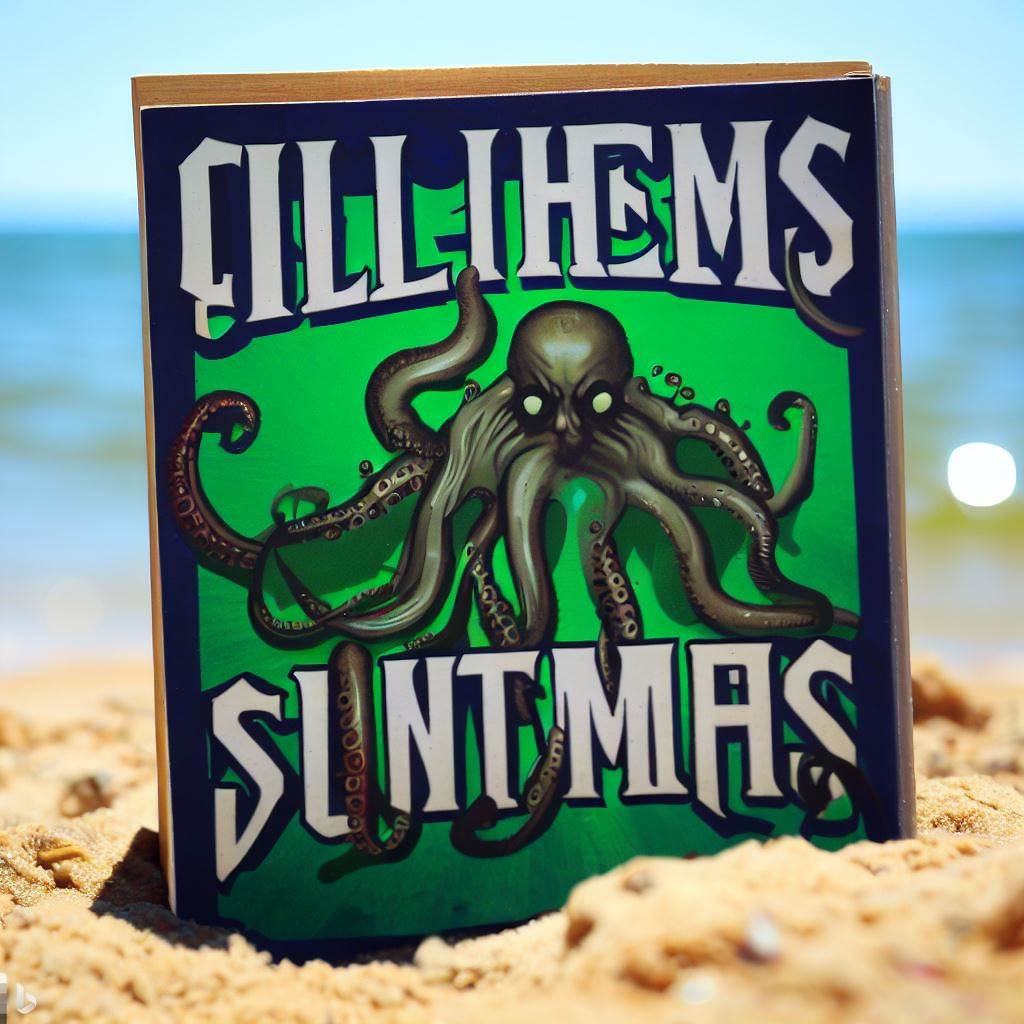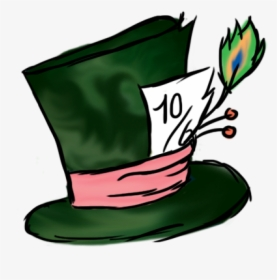The world has a lot of different standards for a lot of things, but I have never heard of a place with the default screw thread direction being opposite.
So does each language have a fun mnemonic?
Photo credit: https://3.bp.blogspot.com/-Giy8OrYJTjw/Tfm9Ne5o5hI/AAAAAAAAAB4/c7uBLwjkl9c/s1600/scan0002.jpg
The Right Hand Rule (RHR). Point the thumb of your right hand in the direction you want something to go. Curl your fingers. That is the direction of rotation. Translate to any language which has hands.
The only thing I don’t like about this is the implication of a left hand rule for left hand threads, which makes my E&M physics brain sad
Multliply bu -1. Same as with negative charge
Right, for a paper physics problem. Try telling someone to multiply their hand by -1.
Flip your hand over
pysic
I guess I’m an idiot because I don’t understand lmao
Your thumb is an arrow pointing at where you want the screw to go. After you curl your fingers, your fingers are arrows showing the direction to turn the screw
Got it!
We were taught a similar trick in physics - point your right-hand thumb in the direction that current (or electrons, same same) is travelling and the curling of your fingers shows the direction of the resultant magnetic field that the current creates.
I teach physics. A prof of mine taught me the right hand rule applies to right handed bolts. No accident they are named that. I teach this to students now. Maybe 1 in 10 like it. The rest prefer their old rhyme. Oh well. Can’t say I didn’t try
I know how to turn a wrench. Knowing the direction is the difficult part. Especially on toilets.
I’m Norwegian. I never learned a rule in my language and always just went by instinct. Until ~3rd year of university in physics where someone told me tha the right-hand-rule applies to screws. Now I use that everywhere for screws in strange positions.
I’m indian and learns right hand screw rule in high school physics
Well, this was a life-changing comment.
I’ve heard the right hand rule regarding magnetism and current direction (because it’s useful to illustrate correlation between vectors), but never about screws. Now that I think of it, it makes perfect sense there too, only that you have to imagine a thumb pointing down most of the time…
Can you elaborate? I googled the right hand rule, but I’m not seeing how it applies to screws.
Grab around a screw with your right hand and extend your thumb (like a thumbs up). Then rotating the screw in the direction which your fingers are pointing will result in the screw moving in the direction your thumb is pointing.
Thumbs up for lifting the screw upwards, thumbs down for screwing the screw downwards. And you can move your hand around to figure out screwing directions for any tricky spots.
Great explanation, thanks
Beware the left handed screws, they’re around but rare. My last encounter was inside a vacuum cleaner motor assembly.
Propane and propane accessories also use left-handed threading. It can be really weird to get used to after a lifetime of righty tighty.
This guy Hanks.
You can cover right/left with “right is the hand you write with, and left is the one that’s left” and be good for 80%-95% of the population.
A nice thought until you run into a left handed thread…
It’s works most of them time unless you’re in a specialty trade making spindle, gears, and such that must be threaded backwards to avoid the wheel undoing itself.
Yep, 80% of the time it works every time!
The point is, if you fix things, you WILL run into left handed threads at some point. I’ve found them in washers, vacuums, blenders, bikes, and cars. Left handed threads aren’t the most common thing, but they are out there waiting to screw with your mind and ruin your day…
Or you work with gas cylinders.
I don’t understand this one, please Airgas
Reverse threads on gas cylinders are (as far as I know) only used for flammables.
I was sure there was a reason, I just never worked in the field long enough to learn or ask why
Thanks 🫡
They’re made that way so you don’t accidentally connect a gas cylinder to a water line.
Fucking facists keeping me from tap en flambé; like they know what is safe.
I heard from a gas guy that this is to ensure that only connectors made for gas usage are used and people don’t build crazy contraptions with plumber gear for flammable gases… Kinda makes sense.
And you feel so incredibly dense every time you run into it and you can’t figure out what’s going on. The crank on my kids bike was out of whack the other week and I kept tightening it down and it kept coming back loose. I was turning the crank one way to tighten it which was pushing it against the lock nut but it needed to turn the other way to be pushed against the bearing before I tighten the lock nut down. If it was all right-handed it would have been clear what I was doing.
Spindles and shafting are places you can find left handed threads. And it depends on the direction of rotation like that bike crank. Can’t have things coming lose due to the way bike cranks turn, so they a left handed thread to stay tight.
It took me a long to time learn that when dealing with such things that I need to stop, look, and think about how things are assembled and why.
… and you hope you don’t forget until the next time you have to do it…
Or when you’re screwing in a screw from behind/under something while lying upside down using a ratchet with an angled extender and you aren’t sure which way is actually left/right where the screw is.
Got that tee shirt too!
Solang das Deutsche Reich besteht, wird die Schraube rechts gedreht.
And how are we supposed to turn screws nowadays?
Your screwdriver subscription has expired.
Please renew your subscription today!
Don’t you dare give them ideas
Wenn das der Kaiser wüsste!
I guess we’re screwed
That’s a lot of extra words for lefty loosey, righty tighty.
One mnemonic is to imagine yourself opening a jar.
I use the right hand rule - ball up your fist with your thumb sticking out, and turning in the direction of your fingers curling will result in the screw going the rest your thumb points.
Right hand for right-handed threads and left hand for left-handed. If unsure, it’s most likely right-handed.
The assumption in this whole post is that it’s right-thread, since left is so uncommon.
Most common example would be a bicycle, I think - your pedals tighten on “in the same direction the wheel turns” as you look at them. So your left pedal has left-hand thread, and goes on and comes off backwards.
The effect of precession also means that you can tighten the pedals on finger tight and a good long ride will make them absolutely solid - need to bounce up and down on a spanner to loosen them.
Oh God I hate those sneaky left-thread bastards lol.
Me learning this about electromagnetism: huh, neat.
Me learning this about something I actually use in day to day life: 🤯
It’s especially helpful when you’re looking at screws (or nuts!) from the back or any other weird frame of reference.
Your door is a jar.
Is it a jar of jam or jelly?
I can easily imagine: “right is right left gets you / it left”
But not every language has the double meanings of right and left.
If japanese has one, I’ve never heard it. Japanese wife hasn’t either. She was surprised it’s a thing. She said maybe tradesmen might, but certainly nothing everyone knows
So when someone changes a light bulb, which direction to turn is just a feeling in their bones?
That’s fair.
Japanese usually just say 時計回り (clockwise) or counter-clockwise
saidaybe?
Yugunnabethawunthatsavemeee
Oh no
Probably a typo of “said maybe”
Yep. I’m getting worse at typing on my phone as I get older. Or my phone keyboard/screen protector sucks; one of the two
Yes, very likely.
Just another instance where AI said fuck this, I ain’t correcting that today.
My dude, look at my post history. I actually noticed it and though “eh, I’ll fix it later” since my wife had finished her coffee and we wanted to free up a table for the people waiting at the cafe.
Or a typo of “you’re gonna be the one that saves me”
Though that’s admittedly somewhat less likely.
Though admittedlyafter all
Count it outer clockwise
Crank it right in?
Lefty righty, loosie tighty.
It depends which bicycle pedal you’re screwing in. They have opposite threads, designed where they’re self tightening on each side.
Same with gas regulators that attach to the cylinders, for some reason. Oo and some hub nuts on cars
I’ve heard flammable gas uses reverse (left hand) thread to prevent cross connection. At least for welding gases in NZ; not sure about natural gas.
Acetylene does, gas lines are standard pipe.
Suppose it’s cause natural gas runs at like, 1-3 psi, while a fresh tank of acetylene is 5,000?
Least in the US
It’s also torches and everything after the regulator, which run at much lower pressure. At least in NZ
I think it might be because they’re connected and disconnected regularly so misconnection is a common problem, even with colour coding. Gas work on houses involves actually putting the fittings on pipe and is done by people who should be concentrating more on that rather than on what they’re about to weld/cut.
Please tell Tongshen, who manufactures the popular TSDZ2 motor. The pedal keeps coming loose because they don’t do this. I keep a key on me to tighten it when it starts to loosen.
Oof, that’s some piss poor engineering right there.
Bottlescrews and turnbuckles both have one end threaded in each direction.
If I remember correctly, old timey glass kerosene lanterns also have backwards threads for some reason
Gas threads and water threads are opposites to each other for safety reasons. Might be part of that thought.
Exactly! Bicycle pedals have a left-hand thread on the left-hand side and “normal” threads on the right-hand side.
Deleted
Definitely nothing in Arabic AFAIK.
I never really got that one, because “left” vs “right” only works when you are looking at the top of the screw. At the bottom, left tightens, and right loosens. So the one I remember is “clockwise to close”.
Edit: the image on the post is actually a good example. If I’m off the screen to the right holding the spanner, then from my perspective, “left” would tighten.
I explained here, but that’s why I prefer using the right-hand-rule. Sometimes thinking about clockwise in strange frame of references hurts my little brain.
If you mime tightening a bolt, your thumb moves to the right. And vise versa.
Am i weird if i tighten bolts by moving my fingers up/down intsead of side to side?
Nah I do the same till it’s loose, it’s faster to rotate with minimal rotation. But once it get harder then I do slower but larger rotations with thumb starting from left side and goes towards right for like 120°.
Left or right-handed?
Both. Odd that you would ask without trying it yourself.
With my left hand, my thumb starts facing right, and then sort of goes down and towards the left.
It works for screws, but as a kid, I was never sure if the clock on the wall should be visualized attached to the ceiling or on the floor when saying “clockwise”. So I was always a bit hessitant on that.
Agreed. If the screw moves left or right, it fell out of its hole, lol. I guess “clockwise” is hard to rhyme.
I’ve always thought this too. I understand clockwise/anticlockwise and the direction being defined from the top - but it’s a circle - no matter which way you turn, it spends 50% of the time going either direction. The phrase works with screwdrivers (especially ratcheting ones), but not so much spanners or Hex Keys IMO.
I always railed against this. I’m using clockwise-lockwise from now on.
Gas pipes. All gas fittings are reversed threaded. So it is virtually impossible to connect one to the other.
You know this has always confused the fuck out of me. You are going around a circle, how is there left and right? There is up-and-left, down-and-left, either way is left. If I am starting on the right of the circle (assuming I’m looking at it) which way is right? Up or down?
This has always annoyed me too. I know why it works, but it’s clockwise and counter-(or anti-)clockwise. If you were turning from the bottom, left and right are mixed up. Maybe it’s just too hard to come up with a phrase using those terms?
Clockwise=lockwise
I always think about the direction that the top of the circle turns to apply left or right rotation, though I usually use muscle memory.
The starting point is on the top.
Use right hand thumb rule. There is no right, there is no left, there is no clockwise or anticlockwise. All of them depend on the way you looks. Rught hand thumb rule fixes it for humans
Imagine it like a car steering wheel.
You’d say turning the wheel to the right turns the car right.

Think of it like this. Like your hand is holding on the top of the steering wheel.
ok but what is behind this picture? I see fur and old matted flesh? a paw with no nails or an old dogs snout?!?!
It’s better to not ask questions sometimes.
backs away slowly
It’s the top part. So if you imagine a little dot at the top (12h) position it would move to the right/clockwise or left/anti-clockwise
Yeah, but once you get one quarter of a rotation through your dot is now moving left.
But the top is still moving right
If it was a wheel, which way would it roll if you turned it like that?
Clockwise = Righty
Or imagine a bottle cap instead of a screw… Muscle memory kicks in.
Thank you! Clockwise looking down at a bottlecap makes sense!
We have: “Nach fest kommt ab”
The phrase “Nach fest kommt ab” is a German saying that translates to “After tight comes off” in English. It’s typically used to describe the idea that if you tighten something too much (like a screw), it will eventually break or come loose. It’s often used to remind people to not overdo things.
… nach ab kommt Arbeit
… after off work follows
Yes, but that phrase does not tell you in which direction you have to turn to tighten it. So it doesn’t really answer the question?
There’s the fun police again





















